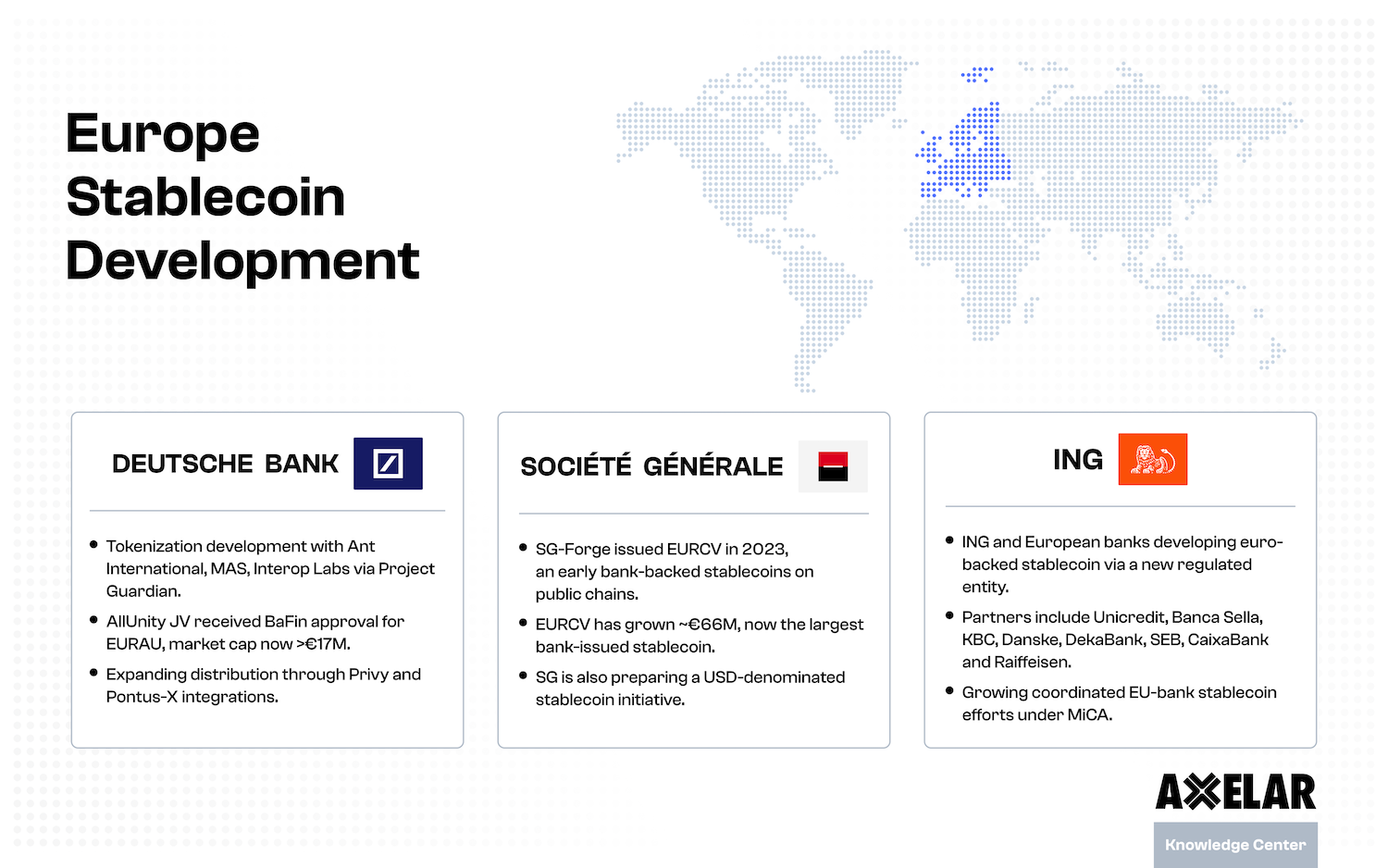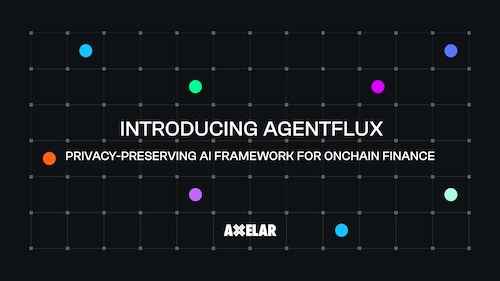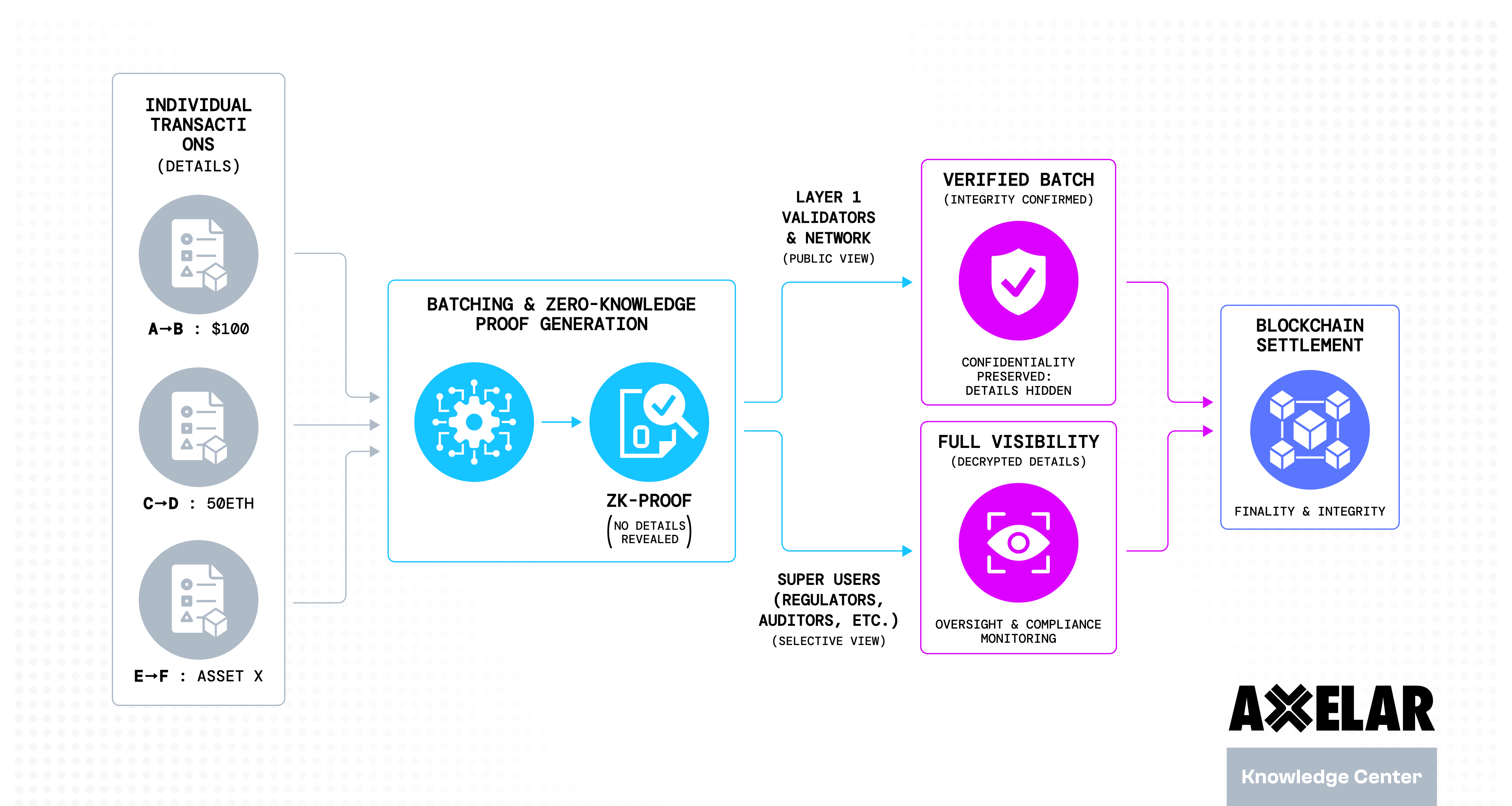Axelar's Mobius Development Stack (MDS): Unlocking a New Web3 Design Space
Table of Contents


Axelar MDS is a new interoperability standard leveraging enhanced AXL token utility to power infinite security and scalability across Web3
Question: What is "Web 3.0?"
Answer: It's a better version of the internet.
Is that what we've got with "Web3"? We were promised an internet with the power of a global community and the freedom to build and to connect. But it feels like something is missing.
The missing piece in Web 3.0 is right before your eyes: it's the Web. Today's blockchain has it ass-backward: trying to form an internet without interoperability.
The internet only grew once open interoperability protocols were established. Many (AOL, Prodigy, MSN) tried to build it behind walls and moats – and failed. Only the most open interoperability protocols could become the backbone of systems that integrate across the Web: anyone could connect; anyone could customize their connection as needed.
Today in Web3, developers choose between incompatible platforms, or spend valuable time managing applications that span them. Electric Capital's 2023 Developer Report showed one in six devs write code on three or more blockchains. It's gone too far. Even Solana acknowledges the need for interoperability.
Enter Axelar's Mobius Development Stack (MDS)
Axelar's Mobius Development Stack (MDS), developed by Interop Labs, a technology company contributing to the Axelar network, is the first-and-only holistic interoperability platform on the market. Axelar MDS offers a suite of open tools and protocols that unlock an entirely new omnichain design space and bring a new dimension to building in Web3.
Axelar MDS is a new interoperability standard with advanced token utility that delivers infinite security and scalability.

As blockchain-based applications scale, they require increasing compute capabilities and seek to deliver increasing degrees of chain abstraction to connect new communities and assets seamlessly. Oracles and restaking improve the compute capabilities of blockchains, and allow developers to build more modular stacks – but on their own, they tend to fragment user experiences. First-generation interoperability networks can provide a degree of chain abstraction, but do not offer unified developer frameworks or scale to hundreds of blockchains.
Only Axelar MDS can do both.One connection, infinite possibilities.
Tldr
Major components have been approved by on-chain governance and deployed to mainnet; additional features are coming soon via the same process. Axelar MDS enables customizable, self-service connection with any blockchain or off-chain system, integrating communities, compute sources, security mechanisms and liquidity pools into a secure, unified user experience.
- Axelar's Mobius Development Stack (MDS) is a holistic suite of open tools and protocols that unlock an entirely new omnichain design space. With Axelar MDS, applications connect easily to users and logic anywhere on the internet – maintaining verified and open properties end-to-end.
- Infinite connections: New blockchains are launching constantly, leaving interoperability protocols to play catch-up. Interchain Amplifier makes self-service connections possible, at scale: new connections are instantiated at the smart-contract layer using tools powered by Axelar VM. The list of upcoming layer 1 interoperability launches includes Flow, Hedera, Solana, Stacks, Stellar, Sui and XRP Ledger – powered by the newly launched Interchain Amplifier.
- Security that scales: Interchain Amplifier leverages a novel application of the AXL token: new connections incentivize Verifiers with pools of AXL; Verifiers post AXL in bond, which they can lose if they behave dishonestly. Integration with Babylon and EigenLayer will augment AXL with enhanced cross-chain security guarantees backed by BTC and ETH, supporting institutional private-chain connections that demand top-tier security.
- Native anywhere, beyond bridges: The Interchain Token Service (ITS) eliminates the need for bridges. Smart-contract developer tools, built in the interchain environment, allow creation and management of tokens that are natively interoperable across multiple blockchains.
- Programmable interoperability: The Axelar Virtual Machine (AVM) underpins Interchain Amplifier and ITS to enable smart-contract logic at the cross-chain layer. This opens doors for a new generation of multichain developer tools and sophisticated dApps. Ethereum introduced programmable money; Axelar introduces programmable interoperability.
Open standards: Axelar expands its integration with OpenZeppelin, a leading smart contract security provider that has secured over $7 trillion in asset transfers, to develop industrywide open semantics for cross-chain interoperability. This allows all developers to benefit from standards that connect any cross-chain network, not just Axelar.

Interchain Amplifier
The Interchain Amplifier, recently approved through on-chain governance and deployed on mainnet, enables developers to instantiate dynamic network connections to any blockchain or off-chain resource, without touching protocol-layer code.
- New connections are encoded at the smart-contract layer, and incentivize designated groups of Verifiers with reward pools of AXL.
- Verifiers post AXL as collateral to provide an economic guarantee of security that scales across thousands of interconnected blockchain connections.
A new validation method for cross-chain connections
Interchain Amplifier can:
- Enhance and, when needed, customize security to achieve any desired cost vs. safety tradeoffs.
- Use external validator sets. New validator sets can be spun up of arbitrary size and membership rules.
- Support advanced validation methods, including light-client technologies to integrate new chains or zero-knowledge (ZK) proofs to verify transactions.
- Eliminate dilutive rewards for new connections to Axelar network, replacing them with a system of AXL reward pools that do not increase AXL supply.
- Offer multiple Verifier selection models:
- Elect Verifiers using Axelar’s on-chain governance, giving each Verifier one vote (phase 1).
- Weight Verifiers by AXL stake (phase 2).
- Weight Verifiers by AXL, ETH and/or BTC stake for augmented security (phase 3).
A mechanism has been proposed to send AXL transaction fees to a burn address, instead of distributing them to tokenholders.
All parameters of the bonding mechanism, including the bond amount, jail conditions and potential future slashing rules, are subject to on-chain governance, which allows the community to adapt the system as needed. The default AXL bond can be augmented through integrations with protocols like Babylon and EigenLayer, which allows for augmented economic security with a choice of blue-chip collateral.
Key components
Interchain Amplifier includes the following key components that make permissionless new-chain connections possible for any application developer:
- Gateway contracts: Two Gateway contracts are required – one on the Axelar network, and one on the blockchain being connected. The source chain's Gateway contract is built using the tech stack of the connecting chain and implements the (Cross-Chain Gateway Protocol (CGP). The Axelar Gateway contract lives on the Axelar chain and uses the Verifier contract to check transaction validity and forward transactions to the Amplifier Router.
- Verifiers / Verifier Contract: A Verifier Contract on the Axelar network verifies the validity of transactions on the connecting chain. Verifiers support specific chains and vote on the truth of source-chain transactions.
- Bonding mechanism: Verifiers must bond tokens to participate in the network. Verifiers register their public key and support for specific chains, which ensures honest behavior and commitment.
- Prover Contract: A smart contract on Axelar that proves the validity of transactions on the connecting chain.
- Message Relayer: A service that listens for events on the connecting chain and relays them to the Axelar network; responsible for sending transaction data to the Axelarscan API.
When a user or dApp initiates a cross-chain message through the source chain's Gateway, Verifiers observe the message on the source chain and validate its authenticity. Once consensus is achieved, they generate and sign a proof. Relayers then pass the verified message to be executed on its intended destination chain via its respective Gateway.
Benefits
- New connections get instantaneous access to all other connected blockchains.
- Simplified integration process for building cross-chain applications using new on-chain and off-chain components.
- Generalized connections between blockchains using disparate consensus mechanisms and technology stacks.
- Best-in-class cross-chain security can be magnified to protect billions or trillions in value, meeting the requirements of financial-markets participants with large value at stake.
Interchain Token Service (ITS)
Interchain Token Service (ITS) makes it possible to replace bridges completely, minting and managing token supply across multiple blockchains. Tokens can move cross-chain as native tokens, with full functionality and fungibility. (Legacy lock-and-mint bridging is also supported.)
ITS is a set of smart-contract tools that automate the complex tasks involved in managing token supply and translating token functionality across multiple blockchains. It vastly simplifies development work for these deployments – and for vanilla tokens, makes no-code multichain token minting possible via the ITS Portal. Find out for yourself: mint an Interchain Token on the portal.
As a component of Axelar's Mobius Development Stack, ITS focuses on token interoperability. While Amplifier enables dApps to connect across chains, ITS lets tokens work as if native within connected ecosystems. This also ensures that code remains manageable as developers create truly chain-agnostic applications where both logic and value can move freely.
Key features
- Cross-chain fungibility preservation: ITS removes barriers to liquidity, supporting apps that replace bridges and wrapped tokens with a burn-and-mint supply management capability that puts native tokens on each chain. This takes apps beyond bridge prefixes and fragmented cross-chain representation. (Traditional lock-and-mint bridging is still supported.)
- Automated supply management: ITS handles the task of maintaining consistent token supply across chains.To do this, it automates processes like minting, burning and locking to ensure the total supply remains accurate regardless of cross-chain transfers.
- Custom token functionality retention: Unique token features (like governance rights or yield mechanisms) are preserved across all chains via translation properties baked into ITS.
These features open up new possibilities for tokenization, including seamless multichain staking, voting and yield farming.
Augmented economic security with Babylon and EigenLayer
Axelar MDS means developers can compose freely, connecting new blockchains and resources to build groundbreaking applications. But not all applications, and not all connections, have the same security requirements.
Interchain Amplifier secures new connections via Verifiers that can be elected via governance, or stake-based using AXL and other types of collateral. The following integrations (subject to on-chain governance) allow augmentation with external collateral.
Integration with EigenLayer will allow MDS-powered applications to tap into Ethereum's vast pool of staked ETH. Applications can set their security threshold using blue-chip collateral. Restakers can put their ETH to work securing any new-chain connection.
Babylon integration - Augmented security on Amplifier doesn't stop at ETH. Babylon enables self-custodial BTC deposits that can be used in applications on other blockchains. This brings bitcoin-level security to the bonding choices for Verifiers on new chains connected via Interchain Amplifier.
These enhancements allow Axelar to scale secure interoperability to hundreds or thousands of connected blockchains. These connections could range from new projects with low security requirements, to established, off-chain financial institutions seeking to connect tokenized assets on private chains, with billions in value locked. With Axelar MDS, all these scenarios are possible.
Open interoperability interface with OpenZeppelin
Interop Labs' previously announced collaboration with OpenZeppelin now introduces a vendor-agnostic, open interoperability interface that prevents lock-in and promotes flexibility in multichain development. Applications can integrate programmable interoperability using these semantics without commiting to a specific provider, including Axelar. Developer teams gain the freedom to swap in different interoperability networks or cross-chain providers as needed.
Open semantics promote common interfaces and practices for cross-chain communication to ensure wide compatibility across ecosystems. As these open standards gain adoption, developers gain familiar tooling when integrating cross-chain functionality, and the applications built using them become more adaptable to ecosystem changes. This means developers can build multichain-capable dApps from day one, without being tied to any vendor or protocol.
Axelar Virtual Machine (AVM)
The Axelar Virtual Machine (AVM) transforms interoperability into a programmable layer. It allows developers to write and deploy smart contracts directly onto the interchain environment, itself.
Key features:
- Smart-contract deployment on the interoperability layer.
- Turing-complete, customizable cross-chain logic powered by CosmWasm.
- Developer toolkits such as Interchain Amplifier on decentralized infrastructure.
The AVM enables advanced interoperability technology like Interchain Amplifier to exist on a universal layer, capable of connecting with any on-chain or off-chain resource. In addition, it enables developers to build application components in the interchain environment – placing logic as close as possible to the assets and users it is serving.
The future of Web3 development with Axelar MDS

Deployment of forthcoming Axelar MDS features is subject to approval by the on-chain governance of the Axelar network. Once approved, and as more chains connect and more developers build on Axelar MDS, we can expect to see increasingly sophisticated multichain applications that leverage the unique strengths of different blockchain ecosystems. This will lead to a new wave of Web3 applications that rival or surpass their Web2 counterparts in terms of functionality, user experience and scalability.
From permissionless, dynamic connections andliquidity to augmented, institutional-grade security, Axelar MDS provides the building blocks for the next generation of Web3 applications. With the integration of OpenZeppelin standards, developers everywhere can tap into battle-tested security that spans an ever-growing ecosystem.
The Axelar community invites developers, projects and blockchain enthusiasts to explore the possibilities that Axelar MDS offers. Join us in building a more connected, efficient and powerful Web3 ecosystem. The omnichain design space is now unlocked, and Web3 has gained a new dimension to build.
- Learn more at axelar.network/mobius.
- Start building at docs.axelar.dev.
- Join the live AMA with Axelar MDS integrators: Oct 10, 4pm UTC at x.com/axelar.


